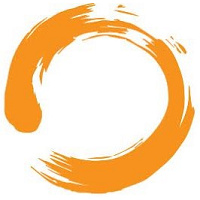When it comes to our life journey, where did we get the idea that we have to move through it in a straight line? We’ve all heard the phrase “It’s the journey that matters,” and yet we still persist in judging ourselves based on where we are in that journey relative to our goals: those mountains in the distance.
There are all sorts of people taking a wide variety of paths through life, but most of these seem to fall into one of two general categories. The first are the people who set a goal for themselves early in life and for whom, from there on out, every decision is guided by whether it supports their achievement of that goal. Other people are more guided by their internal experience and in-the-moment response to each situation or opportunity as it arises and unfolds.
It is easy for each of these types of people to look at the other and think either “There’s something wrong with them” or “There’s something wrong with me.” The truth is there are pros and cons, strengths and weaknesses, and a full range of experience inherent to each approach. In fact, I suspect they may actually overlap and complement one another in many ways. Let’s take a closer look.
Taking a Goal-Driven Path
There is a lot of pressure in our culture to set goals and achieve mastery. There are books written about the 10,000 hours of practice required to achieve mastery – and there are research articles debunking it. Either way, people care enough about how to achieve this thing called ‘mastery’ that it’s a big topic of conversation. A Google search for ‘mastery’ yields more than 43 million results, and ‘achieve mastery’ nearly 24 million. Clearly it’s a goal for many people.
Some people have and sustain a level of interest in a defined goal, topic, or activity that allows them to pursue and achieve mastery – or something resembling it. When they get bored or distracted, they work through it, always in pursuit of their goal. These experiences lead to life lessons in grit, endurance, overcoming adversity, and staying focused. They shape a person who moves through life in this way.
Taking a More Circuitous Route
But not all of us move through life in this way. In contrast to a more goal-driven, straight-line approach to life, there is also a whole upswelling of conversation around the concept of creating your own path. This approach demands a more in-the-moment, self-referential awareness of each step we take and how (and whether) it resonates with ‘who’ and ‘how’ we think of ourselves in the world.
It can be easy to feel lost when following this type of approach, especially during those times when we may be out of sync with our own inner compass.
It’s also easy to feel like there’s something ‘wrong’ with us if we believe (or are repeatedly told) that being goal-oriented and finding our ‘one true’ calling or passion is how we’re ‘supposed’ to do things. Emilie Wapnick has addressed this second issue in her TEDx Talk Why Some of Us Don’t Have One True Calling, which has nearly 185,000 views as of this writing. In it she discusses what she coins “multipotentialites” or “multipods,” those people who have “many different interests and creative pursuits in life.”
She says that “Multipotentialites have no ‘one true calling’ the way specialists do. Being a multipotentialite is our destiny. We have many paths and we pursue all of them, either sequentially or simultaneously (or both). Multipotentialites thrive on learning, exploring, and mastering new skills. We are excellent at bringing disparate ideas together in creative ways. This makes us incredible innovators and problem solvers. When it comes to new interests that emerge, our insatiable curiosity leads us to absorb everything we can get our hands on. As a result, we pick up new skills fast and tend to be a wealth of information.” (Emphasis added.)
Learning to Learn
The benefits of tenacity and of soldiering on despite challenges are well represented and much admired in our culture and are not to be dismissed – when they are right for that situation. What is less recognized is the power and benefit of moving from interest to interest. There are challenges unique to this approach to life that are worth a brief mention.
As a multipod myself, I recognized many years ago that the thing that I was mastering, the practice in which I now have more than 10,000 hours invested, was learning itself. Every new interest and activity required me to become a beginner again, to open myself to the experience of not knowing what I was doing, to become comfortable with floundering and experimenting and discovering. Learning to learn became my goal. I found that learning to learn with grace and joy required humor, humility, self-acceptance, compassion, and curiosity. Learning these qualities changes one’s entire approach toward life.
Once I recognized that I had a talent for learning and a strong capacity for seeing and sharing connections, synergies, and innovative possibilities, I found I could celebrate and ‘go with the flow’ of my unique path rather than questioning and judging it all the time. I recognized that one of my biggest challenges was letting go of the idea that I had to be ‘good’ at something before I’d even started – or that I had to know the intended outcome (or ‘goal’) before diving in to explore a question.
What if curiosity is enough and the rest reveals itself along the way – or years afterward when that puzzle piece slides into place in a whole other scenario?
Challenges Shape Your Path
An essential difference between goal-driven types and multipods is where we put our focus and what we define as our ‘goals.’ Let’s assume there is no right or wrong way of going through life (as Emilie says, the key is to “embrace your inner wiring”). What is important to recognize – and accept – is that our leaning impacts our decisions and responses to experiences along the way, and thus further shapes our path.
For example, boredom is a universal challenge regardless of whether you are goal-driven or a multipod. The difference is that a goal-driven type will typically push through it in pursuit of their vision, while for a multipod, boredom may be the body’s signal that it’s time to move on to something new.
The depth to which you honor your own way of moving through life will ultimately decide the lessons you learn (there are no mistakes, only opportunities to learn and grow!) and the shape your path takes.
Your Life Journey Is Your Own
In either approach toward life, challenges that arise along the way deepen us as human beings. There are also lessons to be learned from each type of approach: for example, the importance of having a compass, whether internal or external, and the essential need to remain present to our experience and gentle toward ourselves and others as we move along our path.
Terry McGlynn wrote a lovely essay contrasting a more circuitous route through life – such as that taken by Jamie Hyneman of Mythbusters – to his own more linear path. He ties them both together through the concept of intentionality.
Intentionality presumes a level of conscious choice that requires us to have not only self-awareness, but “meta” awareness – an awareness of the larger context and the preciousness of our place in it.
The more we can see the benefits in both approaches and recognize our ability to be both goal-oriented (definitions of what constitutes a ‘goal’ will vary) and mindful in our own choices and resulting path, whatever direction it carries us, the more we are free to choose the perspective that works best for us at any given time.
For example, a person might be externally goal-driven for many years and then choose to shift gears as they enter a second (or third) career or move into retirement, at which point their focus might turn to internal goals and a whole new path for learning and growth. Or the reverse might happen – a person who has been diving into their internal experience for years, feeling their way along, might stumble across a passion that consumes them in a long-term, externally motivated sort of way. In both instances, new lessons will inevitably be learned as they face challenges from a fresh perspective.
Here’s my general rule of thumb in both instances: If it energizes you, go for it! If it’s charged, good or bad, find out how and why. Be curious, be compassionate, be courageous – and most important of all, laugh heartily and often. Bon voyage!



